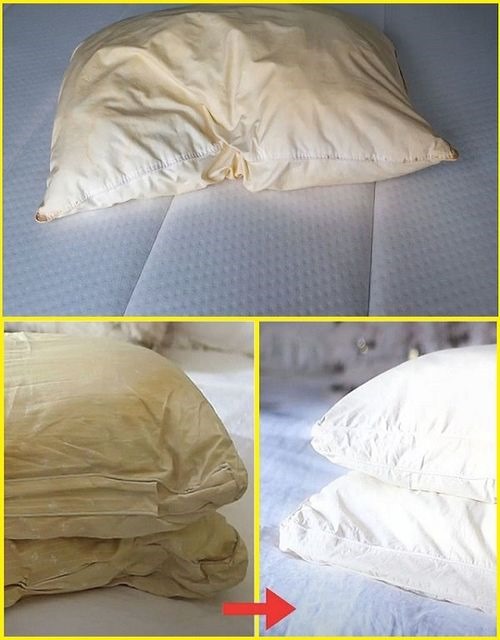ADVERTISEMENT
– **Every 3-6 months**: For people without allergies, this is typically enough.
– **Every 2-3 months**: For individuals with allergies or asthma, more frequent washing may be necessary.
– **As needed**: If you notice your pillows becoming dirty, stained, or smelly, it’s time to clean them—whether it’s been a few months or not.
—
## **Step-by-Step Guide on How to Clean Dirty Pillows**
Now that you understand the importance of cleaning your pillows, let’s dive into the step-by-step process of how to properly clean them. Whether you have down, feather, synthetic, or memory foam pillows, this guide will help you achieve clean, white, and fresh-smelling pillows.
### **Step 1: Check the Care Label**
The first thing you should do before cleaning your pillows is to check the care label. Different types of pillows require different cleaning methods. Most pillows come with instructions that specify whether they can be machine-washed, hand-washed, or need professional cleaning. Here’s a breakdown of common pillow types and their care instructions:
– **Down or Feather Pillows**: These are often machine washable, but be sure to wash them on a gentle cycle with mild detergent.
– **Synthetic Pillows**: Most synthetic pillows can be machine-washed on a warm cycle with a mild detergent. However, it’s best to air-dry them to avoid damaging the filling.
– **Memory Foam Pillows**: These should not be machine washed, as the agitation can break down the foam. Instead, spot clean with mild detergent and warm water.
– **Latex Pillows**: Similar to memory foam, latex pillows should not be machine washed. Use a mild soap solution for spot cleaning.
### **Step 2: Remove Pillowcase and Protect the Pillow**
The first step in cleaning is to remove the pillowcase. Washing the pillowcase separately ensures that any oil, sweat, or dirt that may have transferred to the pillowcase doesn’t end up on your pillow during the cleaning process. It’s also a good idea to protect the pillow if it’s particularly delicate (such as down or memory foam pillows). You can place the pillow inside a mesh laundry bag or pillow protector to safeguard it from damage during washing.
### **Step 3: Choose the Right Detergent**
When it comes to choosing a detergent, go for one that is mild and free from harsh chemicals or fragrances. Strong chemical detergents or bleach may damage the fibers of your pillow and strip away its softness. Opt for a gentle laundry detergent that is designed for delicate fabrics. Some people even recommend using baking soda or vinegar as natural alternatives to deodorize and remove stains.
If you are washing down or feather pillows, choose a detergent designed for delicates to help preserve the down feathers and avoid clumping.
### **Step 4: Washing the Pillow**
Once your pillow is ready for cleaning, there are a couple of methods you can use:
#### **Machine Washing**
Most synthetic and feather pillows can be machine-washed. Here’s how to do it:
1. **Use a Gentle Cycle**: Set your washing machine to a gentle cycle with warm water.
2. **Add Mild Detergent**: Use a mild detergent. For down or feather pillows, consider adding a small amount of specialized down detergent to preserve the quality of the feathers.
3. **Balance the Load**: If you are washing multiple pillows, try to balance the load to avoid the washing machine becoming too heavy. You can add a couple of towels to help with this.
4. **Double Rinse**: After the first wash cycle, run a second rinse cycle to ensure that all detergent residue is removed from the pillow.
For Complete Cooking STEPS Please Head On Over To Next Page Or Open button (>) and don’t forget to SHARE with your Facebook friends
